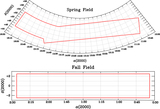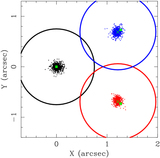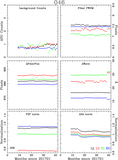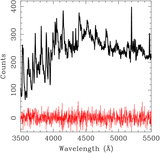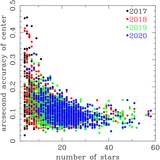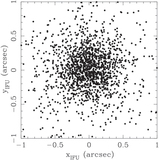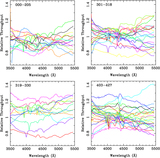Image Details
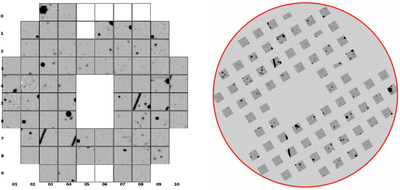
Caption: Figure 3.
Left: A reconstructed image showing the layout of IFUs on the HET’s focal plane for data taken on 2020 June 16. This image is formed by collapsing the 4400–5200 Å spectral region of the VIRUS spectra from a science observation. The image shows the IFUs as being adjacent to each other in order to save space; each IFU is 51″ on a side. The open squares on the outsides of the array denote inactive IFUs; the open rectangle in the middle shows space occupied by other HET instruments. The streak seen in five of the IFUs (037, 047, 085, 095, and 104, where the first two digits represent horizontal numbering and the last digit gives vertical position) is from a moving object, most likely an asteroid or satellite. At the time the frame was taken, 71 IFUs were operational. Right: The same science observation showing the locations of the IFUs on sky. In this image north is up and east to the left; the IFUs are arrayed on a 100″ grid. The red circle has a diameter of 18′. Note that the IFUs are oriented in the direction of the parallactic angle and will therefore change with the azimuth of observation. The moving object is now obvious.
Copyright and Terms & Conditions
© 2021. The Author(s). Published by the American Astronomical Society.



